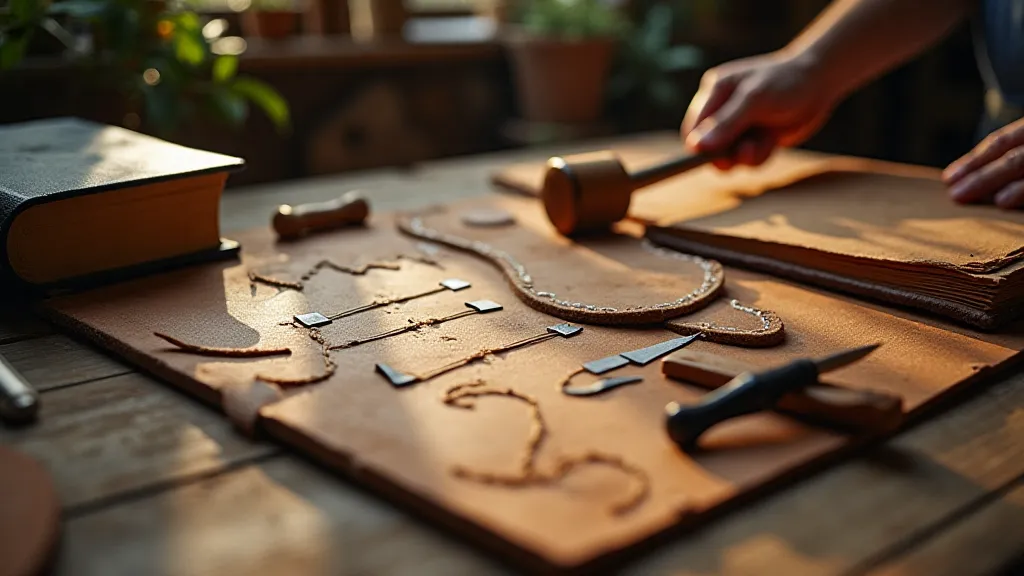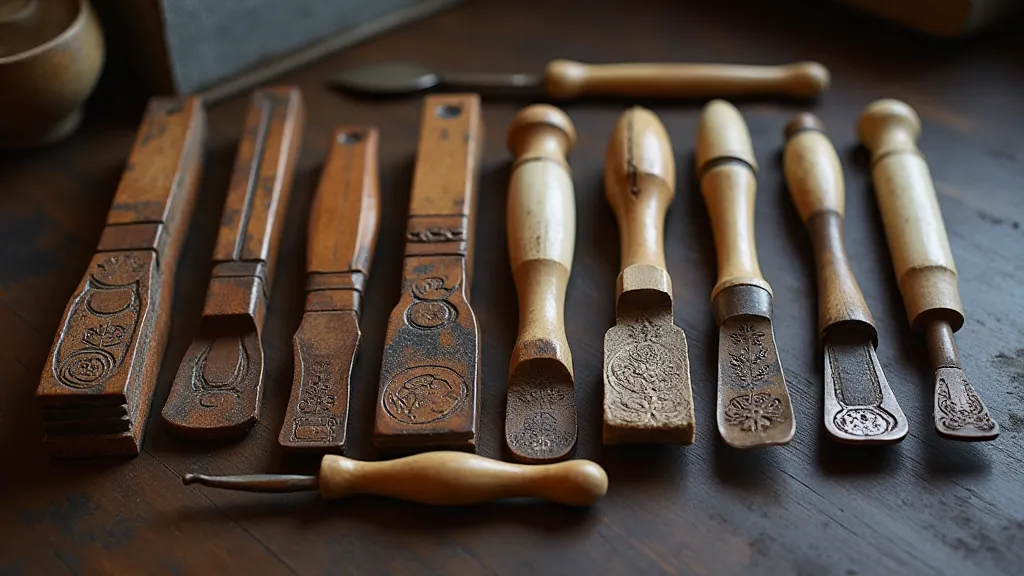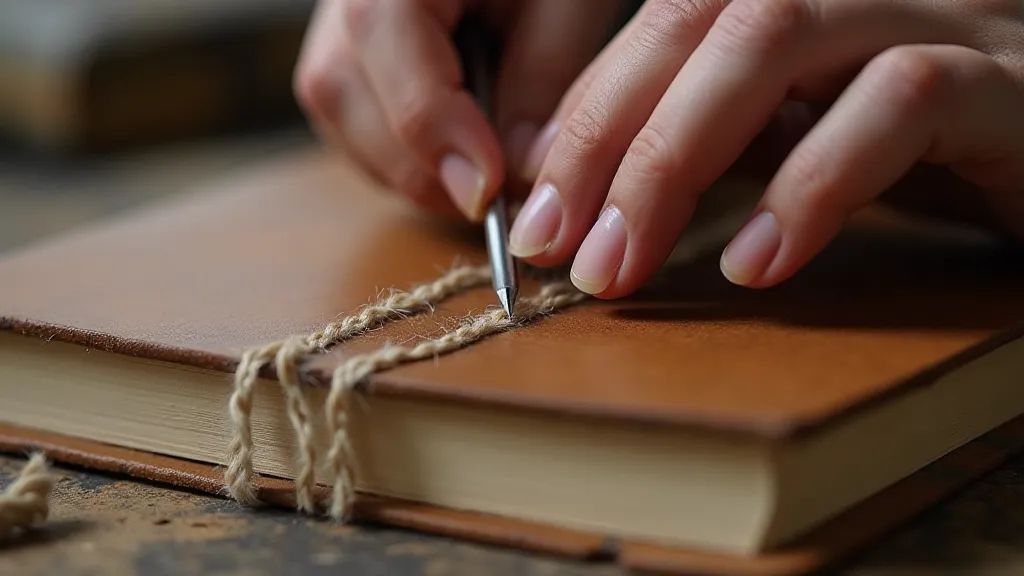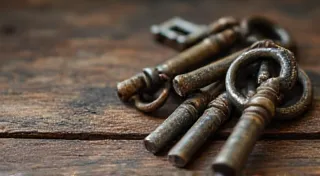The Bookbinder's Toolkit: Essential Instruments of the Craft
There's a profound connection between the aging patina of a well-loved book and the tools that brought it into being. I remember finding an antique accordion at a flea market years ago. Its bellows, worn and creased with countless performances, held a silent history. It resonated with a kind of enduring beauty – the beauty of something crafted, something used, something loved. That feeling, that sense of enduring presence, is what I strive to capture in my own bookbinding. It’s more than just crafting a container for words; it’s creating an object of lasting value, a tangible link to the past and a legacy for the future. And that journey begins with the tools.

The Core Instruments: Where to Begin
Starting leather bookbinding can feel daunting. The sheer number of potential tools can be overwhelming. But don't be paralyzed by choice! A foundational toolkit doesn't need to be extensive. Think of it as establishing a solid base to build upon. Let’s break down the essentials.
Awls and Needles: The awl is your primary piercing tool. A diamond awl is a superb investment; it’s incredibly sharp and handles thick leather with ease. For beginners, a simple, stout awl will suffice. Leather needles are critical; bookbinding needles are typically longer and stronger than sewing needles. A selection of sizes is best; larger needles for heavier leathers and smaller ones for intricate details. Consider the thread as well – selecting the right thread isn’t just about strength; it's about expression. It's about the overall artistic statement you want to make. For some, this might mean a bold, contrasting color. For others, it's the subtle nuances of texture and tone that truly speak. Learning to express emotion through stitch density and color can elevate your work from functional to truly artistic.
Thread and Cord: Linen thread is the traditional choice for its strength and durability. Waxed linen thread is a godsend – the wax prevents tangling and provides a smoother sewing experience. For spine sewing and decorative elements, waxed cord offers a rustic and robust aesthetic. The color is a personal choice, but consider the leather color you’re using – a complementary or contrasting color can enhance the overall look.
Bone Folder and Mallet: The bone folder is arguably the most versatile tool in the bookbinder’s arsenal. It’s used for creasing leather, smoothing surfaces, and burnishing edges. It’s not just for bone, though; modern versions are often made of Teflon or plastic but mimic the functionality of the original. A small, wooden mallet is essential for tapping the awl and striking other tools safely.
Cutting Tools: A sharp craft knife or utility knife is a must for trimming leather and cutting paper. A rotary cutter can be useful for long, straight cuts, especially when dealing with larger sheets of paper. Always prioritize safety and use a cutting mat to protect your work surface.
Expanding Your Horizon: Intermediate Tools
As you become more comfortable with the basics, you might start exploring tools that open up new creative possibilities. This is where the journey of a bookbinder truly deepens, as you experiment with techniques and personalizing your craft. The creation of custom notebooks, spaces for reflection, is an extension of this practice and understanding what it means to bind something beautiful.
Edge Finishing Tools: Burnishers, scrapers, and edge gilding tools are used to refine the edges of the leather, creating a professional and elegant finish. A simple burnisher – often made of bone or Teflon – can significantly improve the appearance of a finished book. The principles guiding your craftsmanship can extend beyond simple refinement, too. Creating personal notebooks—spaces for reflection—is a powerful extension of the craft. You can learn more about crafting these personalized sanctuaries at The Binding as Sanctuary: Crafting Personal Notebooks as Spaces for Reflection.
Leather Stamps and Modeling Tools: For those interested in tooling and decorative elements, leather stamps and modeling tools are invaluable. These allow you to imprint patterns, create textures, and add personalized designs to the leather.
Corner Reinforcers and Clasps: For specialized bindings, corner reinforcers and clasps can provide added protection and functionality. These are particularly useful for journals and notebooks that will be handled frequently.

The Paper Connection: Essential Companions
Leather bookbinding isn't just about the leather; it’s about the contents within. The quality of the paper complements the craftsmanship of the binding and contributes significantly to the overall experience. Beyond the visible elements of tooling and edge finishing, understanding the historical context and nuances of traditional techniques becomes even more important.
Parchment Paper Guide: Parchment paper (often mistaken for tracing paper) plays a vital role in protecting your finished pages. It prevents adhesion between leaves and acts as a barrier against dust and moisture. Select a parchment paper that is strong enough to withstand handling but thin enough not to add excessive bulk.
Bookbinding Paper: Consider the weight and texture of your bookbinding paper. Laid paper is a classic choice, offering a beautiful, textured surface. For more formal bindings, archival-quality paper is a must to ensure the longevity of the contents.
Endpapers: Endpapers are the pages that connect the text block to the cover. They provide a visual transition between the content and the binding and can be a beautiful opportunity to showcase your creativity.
Historical Context & Collecting
The tools of the bookbinder have evolved over centuries, reflecting changes in technology and style. Antique bookbinding tools aren't just instruments; they's artifacts of a rich history. Collectors often seek out tools marked with the maker's initials or bearing unique designs. These tools offer a tangible connection to the past, a glimpse into the workshops of master craftsmen. Understanding how these traditions developed can unlock new techniques and perspectives on your own craft. Reconnecting with those rich methodologies requires careful consideration of the historical context and the principles that guided those early artisans. You can explore Echoes of the Guild: Reconnecting with Historical Binding Methodologies to learn more about this fascinating journey into the past.
Binding Leather Spine: Understanding historical methods is invaluable for creating authentic-looking bindings. Early bookbinders often used simpler tools and techniques, focusing on functionality and durability. Examining antique bindings can reveal invaluable insights into these methods and inspire your own creations.
Book Repair Tutorial Insights: Many book repair tutorials emphasize the importance of preserving the original binding. Restoring antique books requires a delicate touch and a deep respect for the craftsmanship of the original binder. The techniques employed in repairing and restoring these precious volumes often reflect a profound understanding of the original binding methods.

Creating Custom Notebooks & The Joy of Craftsmanship
Ultimately, the tools of the bookbinder are instruments of creative expression. Whether you're crafting a luxurious journal or restoring a treasured heirloom, the act of creating something beautiful and enduring is immensely rewarding. The process demands patience, precision, and a deep appreciation for the materials and techniques involved. The beauty of a hand-bound book lies not only in its aesthetic appeal but also in the story it embodies – the story of the binder’s skill, the author’s words, and the reader’s experience. It's a legacy worth preserving, one stitch at a time. Achieving that level of refinement often involves mastering techniques that are both intricate and demanding. Learning about Beyond the Visible: Unveiling the Subtle Art of Edge Gilding in Leather Bindings can help you reach new heights of artistry.
The journey of a bookbinder is a lifelong pursuit of learning and refinement. As you explore new techniques and experiment with different materials, you'll discover your own unique style and develop a deeper connection to this ancient and timeless craft. The tools are merely the means; the true magic lies in the hands of the craftsman.





